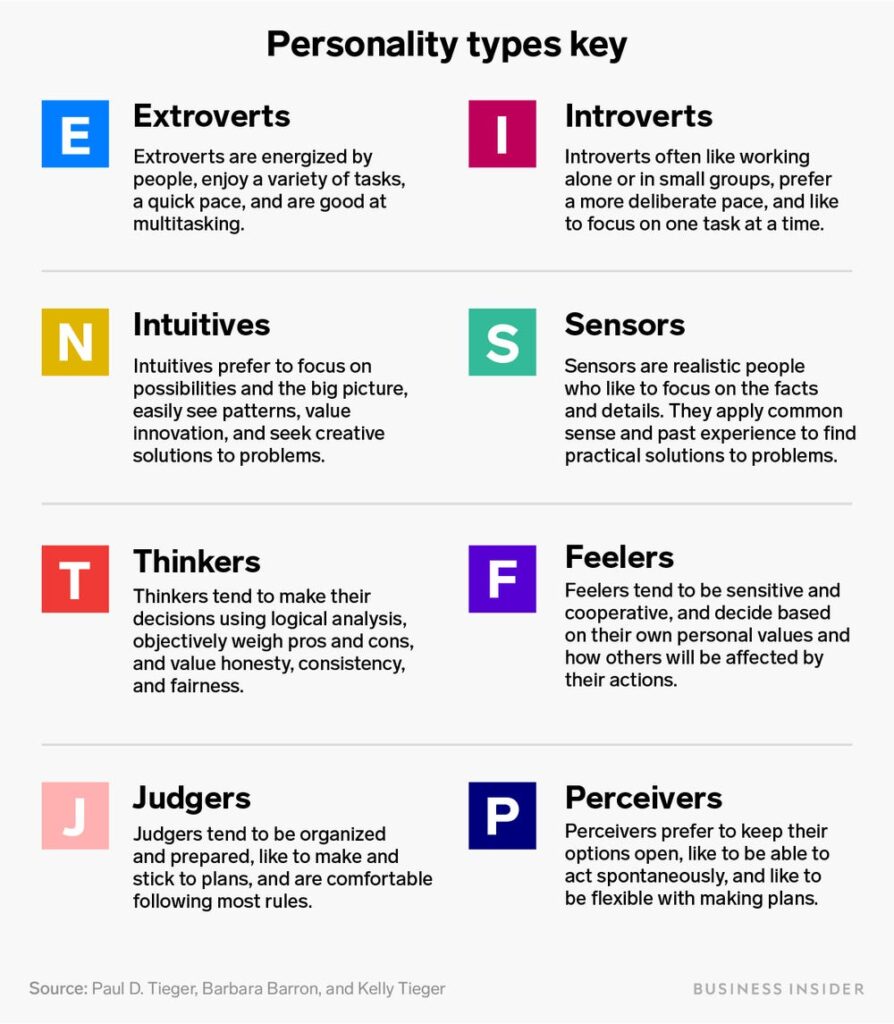The 16 personality types were created by Isabel Myers and Katharine Briggs, developers of the MBTI® assessment. Myers and Briggs created their personality typology to help people discover their own strengths and gain a better understanding of how people are different.
When you discover your own personality type, you’ll understand more clearly why you do the things you do. You will gain confidence in your strengths and be better able to make decisions that suit your true nature.
About the 16 Personality Types
Personality typing is a system of categorizing people according to their tendencies to think and act in particular ways. Personality typing attempts to find the broadest, most important ways in which people are different, and make sense of these differences by sorting people into meaningful groups.
When you discover your own personality type, you’ll understand more clearly why you do the things you do. You will gain confidence in your strengths and be better able to make decisions that suit your true nature.
What is the meaning of the four letters in a personality type?
The 16 types are typically referred to by an abbreviation of four letters. Each of the four letters in a personality type code stands for a preference in your style of thinking or behaving.
I/E: Introversion or Extraversion
The Introversion/Extraversion dimension describes how a person manages their energy.
Introverts are energized by spending quiet time alone or with a small group. They tend to be more reserved and thoughtful.
Extraverts are energized by spending time with people and in busy, active surroundings. They tend to be more expressive and outspoken.
S/N: Sensing or iNtuition
The Sensing/Intuition dimension describes how an individual processes information.
Sensors focus on their five senses and are interested in information they can directly see, hear, feel, and so on. They tend to be hands-on learners and are often described as “practical.”
Intuitives focus on a more abstract level of thinking; they are more interested in theories, patterns, and explanations. They are often more concerned with the future than the present and are often described as “creative.”
T/F: Thinking or Feeling
The Thinking/Feeling dimension describes how people make decisions.
Thinkers tend to make decisions with their heads; they are interested in finding the most logical, reasonable choice.
Feelers tend to make decisions with their hearts; they are interested in how a decision will affect people, and whether it fits in with their values.
J/P: Judging or Perceiving
The Judging/Perceiving dimension describes how people approach structure in their lives.
Judgers appreciate structure and order; they like things planned, and dislike last-minute changes.
Perceivers appreciate flexibility and spontaneity; they like to leave things open so they can change their minds.
These abbreviations are applied to all 16 types.
- INTP – The Architect
- INTJ – The Mastermind
- INFP – The Healer
- INFJ – The Counsellor
- ISTP – The Craftsman
- ISTJ – The Inspector
- ISFP – The Composer
- ISFJ – The Protector
- ENTP – The Visionary
- ENTJ – The Commander
- ENFP – The Champion
- ENFJ – The Teacher
- ESTP – The Dynamo
- ESTJ – The Supervisor
- ESFP – The Performer
- ESFJ – The Provider


